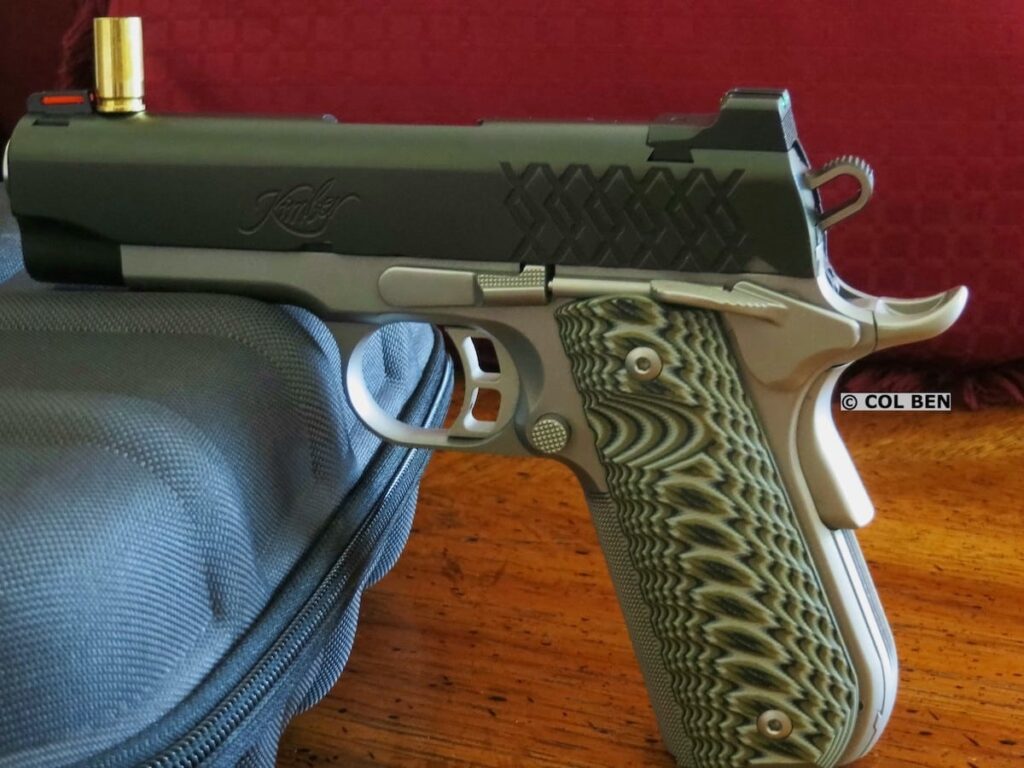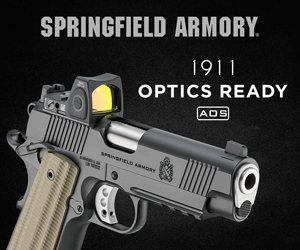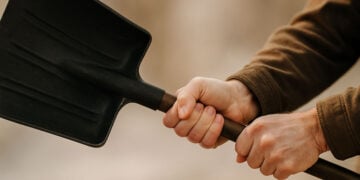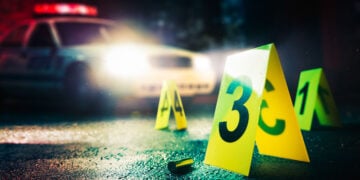Much like the statement in the alcoholic or addicts creed that we have heard, there could be a similar statement in a creed for gun shooters about flinching. It probably would be something like this and I could say it for myself: “I am a flincher.” Of course, the first step and key to resolving any problem, be it troubles, issues, or difficulties with anything, like alcohol, cigarettes, drugs, over-eating, yodeling in the shower, or (my favorite problem) chocolate is to acknowledge that you have a problem. Sometimes, we are hesitant or blatantly non-accepting of existing problems we have and wholeheartedly deny we have any issue at all. Even when others recognize the definite problem we have.
In my over forty-five years of teaching handgun basics to military, law enforcement, and civilian shooters, I have observed the flinching problem with many, yes many, students, not to mention the frequent reoccurrence of that pesky problem for myself. Luckily, I recognize my own reoccurring flinching problem and take steps to resolve it, but sadly most do not see their own flinching problem, so it compounds into a bigger one. Since almost everyone has the flinching problem at times when shooting, it is nothing to be ashamed of and doesn’t categorize you as a weak shooter. This article will address defining and recognizing a flinch, accepting that you might sometimes have the problem, differentiating between the types of flinches, and taking some corrective actions to solve your flinch problem. I present two drills to help you identify and focus on a flinch. And seven tips and techniques to help you correct your flinching problem.
What is a Flinch?
A flinch is an unintended physical and/or mental reaction that shooters make when shooting a gun. It results in a misplaced shot from its intended point of impact. Lt Col Jeff Cooper called it a “post-ignition push.” I like to describe it as a “concurrent-ignition push,” since it usually happens at the same time the trigger is pressed and the shot breaks, not afterward.
It usually happens to new or inexperienced shooters, but it can happen to experienced shooters or those who have not shot for a while as well. Believe me, I know about flinches at this time, because of COVID precautions, lack of range live-fire time, the ammo shortage, less practice time, and backing off of competitive shooting events. So, flinching can affect experienced and inexperienced shooters at various times and it generally is a learned response.
Types of Flinches
There are basically two types of flinches, a physical flinch, and a mental-anxiety flinch. A physical flinch is an instinctive quick, nervous reaction, as shown by wincing body movements, unintended and impromptu reflexes, real or imagined fear, and anticipated, possible pain from unknown shooting results and likely being hurt by the recoil of the gun.
The other type is a mental-anxiety flinch which stems from the shooter’s uneasiness and worry because of their overwhelming desire to make target hits, do well, and thus inadvertently do not fully focus and concentrate on the fundamentals of shooting, particularly the trigger press. There may or may not be an anticipation of the “bang” and felt recoil. But, the anticipation is especially prevalent for new shooters. The mind focuses almost solely on the approaching loud noise or the upcoming possible felt recoil of the gun, either from imagined fear, the unknown effects, or the desire to control outcomes.
Of course, both types of flinches can exist at the same time for any shooter. Sometimes it is difficult to differentiate between the two. And the mental-anxiety fear of the mind can actually cause a physical flinch in the grip, trigger press, fingers, hands, arms, shoulders, and body, as the body reacts to what is about to happen from the recoil. I have often seen new shooters shrugging their shoulders and rapidly blink or close their eyes with a startle response. The startle reflex is a brainstem reflectory reaction that serves to protect parts of the body, like the back of the neck or the eyes, and is a form of escape from sudden stimuli.
Causes of Flinching
To diagnose a flinch, know which type(s) exists. Generally, there seems to be a common group of hints that explain the type of flinch. If the shooter yanks the trigger quickly and very hard, closes their eyes just before the gun fires, moves the muzzle at the last second before firing, shoves the gun up, down, or sideways at the last second, places their trigger finger incorrectly on the trigger, and/or definitively moves several fingers, their hand, wrist, arm, or body when firing, these usually hint that there is primarily or solely a physical flinch problem. Trying to control the gun at the moment it discharges can cause a physical flinch. Too loose of a grip and then suddenly tightening the grip in an attempt to control muzzle flip as the shooter presses the trigger can cause a physical flinch.
Generally, the more the gun recoils or kicks or the louder the muzzle blast, the more pronounced the flinch. Usually the more powerful the cartridge or the lighter the gun, the more tendency to flinch. And as I have personally learned, the faster I shoot, the more I tend to flinch. This varies, of course, and there is much variation among shooters.
There can be the co-existence of both physical and mental flinches and it is difficult to separate them sometimes. If the shooter violates several fundamentals of shooting by not focusing or concentrating on specific principles or fundamentals of properly shooting, and worries about them, this indicates a mental-anxiety flinch. Thankfully, all of these emerging flinching problems can be resolved.
Techniques to Help Identify a Flinch
Sometimes no matter what I say to some students, a few will not admit that they have a flinching problem. I see this mostly among experienced shooters and new shooters. So, I have to show them their problem, so they will recognize it for themselves like I reluctantly have done for myself. Here are two frequently used techniques to help identify and focus on a flinch. The Ball and Dummy Drill helps the shooter identify their flinch, while the Casing on the Muzzle Drill helps the shooter focus on the flinch and trigger press.

Ball and Dummy Drill or Blind Loading of the Gun
After observing the shooter shooting for a while and flinching, ask them to hand you their magazine and pistol or to hand you their revolver. Tell them to turn their back and that you want to try an experiment to help them with their shooting. Make sure they understand that you are not trying to embarrass them. Then you can load the gun with either live rounds or use snap caps or dummy rounds… or alternate between inserting live and dummy rounds in the gun. I like to NOT load the magazine with any rounds at all and insert it into the pistol… or do NOT load the revolver at all. Then hand the unloaded gun back to the shooter and tell them to concentrate on getting their best target hits. You can videotape their shooting results with your cell phone, but they will probably easily recognize their own flinching. When they shoot without rounds in the gun, when flinching they will shove the gun forward and down or to the side when they press the trigger for a shot, even though the gun does not fire. Even though there will not be angelic music or a rainbow, there will be an apocalyptic, serendipitous epiphany for the shooter. (I have to keep your attention.) They will be surprised at the earth-shattering revelation that they are indeed flinching and try very hard to not flinch again. The first step of identifying a flinch has been accomplished. Now additional training and practice to overcome the flinch and related trigger press must follow.
Empty Casing on the Muzzle or Sight Drill
To conduct this drill for your pistol, find an empty casing (9mm or .380 casings seem to work best because they are lighter.) Make certain your pistol is unloaded and perform a safety check by first removing the magazine. Then lock back the slide and double-check that the chamber is clear of any ammo. Take your shooting stance and grip your gun as if ready for firing. Ask a shooting friend to place an empty casing, primer-side down, on top of your front sight. If your sight is angled or slanted and it is difficult for the gun to balance or hold your casing, place the empty casing just behind the front sight. Now press the trigger until the click occurs like firing a live round. You should keep the empty casing balanced on the sight or just behind it, so it does not fall off. Reset the slide and repeat this drill several times. The first few times you do the drill you will see the casing fall off the muzzle or sight, so do not be discouraged. It will get easier to take your shots without the casing falling off the front. This will help your trigger press which is directly related to flinching and will help you control them.
Seven Tips for Correcting a Flinch
Here are seven tips, techniques, and approaches for physical and mental preparedness that I use for correcting a flinch.
Tip #1: Recoil
Ensure the shooter knows what causes recoil, that recoil naturally happens, and that the gun will not hurt them if proper techniques are followed. The shooter must accept that recoil happens and learn to hold still and not be tense, allow their body to absorb the recoil, and accept the felt recoil. They must be both physically and mentally prepared to handle the recoil and selecting the optimal firearm is essential. Of course, regular practice shooting and knowing the firearm are helpful. See my previous November 1, 2012 article:
7 Common Mistakes of Concealed Carry Licensees & New Shooters
Tip #2: Ear and Eye Protection.
Make certain the shooter is wearing proper ear and eye protection. It is important to not only protect the shooter from injuries but to let them know that they are properly protected and their equipment will help with the “bang” noise and possible injuries. Make the shooter as comfortable as possible about shooting and avoiding injuries. I like properly -fitted expandable foam earplugs along with protection earmuffs for fine sound reduction. See my previous January 3, 2013, and August 10, 2016 articles:
Select Proper Hearing Protection for Shooting to Avoid Permanent Hearing Loss
9 Considerations for Selecting Your Shooting Glasses
Tip #3: Gun Fit and Caliber
It is important to take the time and ensure that the gun used by the shooter matches their shooting experiences and ability level. Naturally, a smaller caliber gun recoils less and a gun that can be physically controlled by the shooter helps minimize recoil, muzzle flip, and movement for optimal results. This is why I initially always use .22LR caliber handguns in training new students. See my previous June 24, 2020 article:
10 Criteria for Properly Fitting Your Pistol for Concealed Carry
Tip #4: Proper Grip
Any gun that is not firmly gripped can exaggerate the effects of recoil and induce a flinch. If a grip is too low on the handgun’s backstrap or mainframe housing, it can accentuate the muzzle flip. So, there needs to be a strong and high grip on the backstrap and better leverage when the trigger is pressed to help stop flinching and movement. A proper grip will help dissipate the recoil straight back through the radius and ulna bones (not soft tissues) of the forearm. See my previous July 8, 2019, and November 1, 2012 articles:
A Basic Checklist and Suggestions to Help Your Handgun Grip
Proper Grip: Guidelines & Techniques for Recoil Contro
Tip #5: Proper Stance
Leaning back away from the gun and/or too straight a posture affects the shooter’s balance, center of equilibrium, and affects flinching. This increases the shoving of the gun forward when pressing the trigger so as to not lose one’s balance. It is best to lean into the shot, let your center of gravity be forward, and be positioned slightly forward with your stance. I like the Modern or Modified Isosceles Shooting Stance. See my previous May 10, 2013, and December 5, 2017 articles:
The Modern or Modified Isosceles Shooting Stance
C.A.R: A Unique Shooting System for Improved Accuracy
Tip #6: Proper Trigger Control
To control a shot, make accurate target hits, and to not flinch involves increasing the pressure on the trigger smoothly, positively, evenly, and gradually without interruption. If the shooter anticipates the “bang”, and quickly yanks on the trigger there will almost always be unintended target misses and flinches. Learning through frequent practice to smoothly and gradually apply trigger pressure while maintaining sight alignment will alleviate flinching. See my previous December 12, 2017, and November 12, 2015 articles:
Identifying & Fixing Common Trigger Control Problems
Mistakes and Considerations in Trigger Control
Tip #7: Regularly Use Dry Fire Practice
Dry fire means to train and practice without using live ammunition. You can Dry Fire practice inside the home, but pick a safe area and dedicate it for this practice. It is a great method to practice without the stressors and “bang” sound that are causing the flinch, to begin with. I definitely believe that frequent Dry Fire practice will significantly help you build a foundation of basic skills, establish solid shooting habits, and build muscle memory. And for me, the biggest benefit of Dry Firing is reducing flinching. See my previous January 12, 2016, and June 5, 2015 articles:
Beyond Basic Handgun Skills: 8 Essential Concealed Carry Skills
Concealed Carry Checklist: 12 Key Guidelines
Conclusions
The first step and key to resolving any problem, like flinching, is to acknowledge that you have a problem. There are basically two types of flinches, a physical flinch and a mental-anxiety flinch, each with their own concerns. Sometimes we are blind and unaccepting of an obvious problem we have and must be shown that the problem really exists. There are two drills to help you identify and focus on a flinch. One drill that helps a shooter recognize firsthand that they have a flinch is the Ball and Dummy Drill or blind loading of the gun. The other drill is the Empty Casing on the Muzzle or Sight Drill to help the shooter focus on trigger control and help fix flinching. This article also presents seven tips and approaches to correcting a flinch. These tips have helped me with my flinch problem and I hope they help you as well.
Continued Success!
Photo by author.
* This personal opinion article is meant for general information & educational purposes only and the author strongly recommends that you seek counsel from an attorney for legal advice and your own personal certified weapons trainer for proper guidance about shooting & using YOUR firearms, self-defense and concealed carry. It should not be relied upon as accurate for all shooters & the author assumes no responsibility for anyone’s use of the information and shall not be liable for any improper or incorrect use of the information or any damages or injuries incurred whatsoever.
© 2021 Col Benjamin Findley. All Rights Reserved. This article may not be reprinted or reproduced in whole or in part by mechanical means, photocopying, electronic reproduction, scanning, or any other means without prior written permission. For copyright information, contact Col Ben Findley at [email protected].










